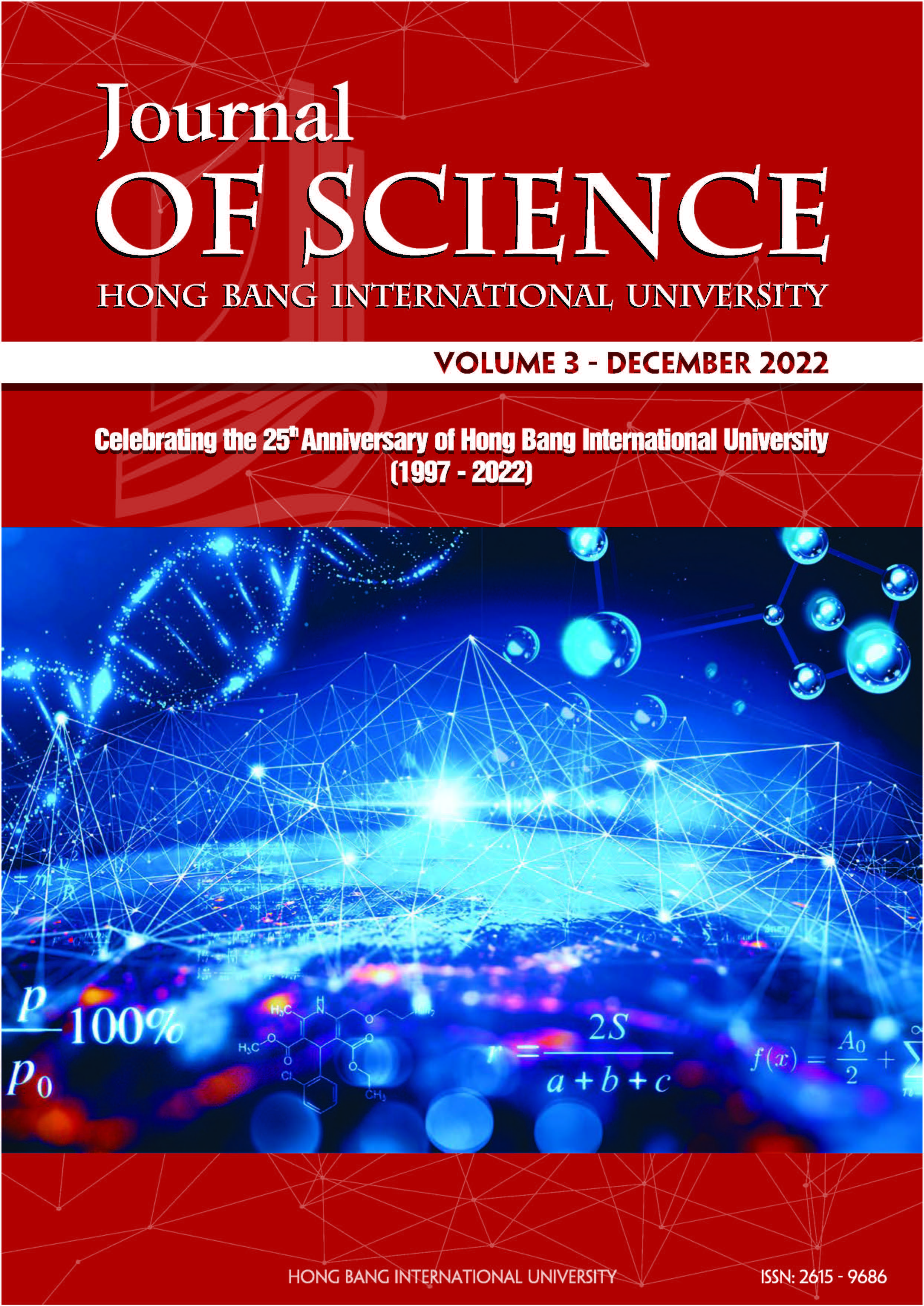Factors influencing Vietnam's rice export to Europe
Các tác giả
Từ khóa:
hoạt động xuất khẩu gạo, Việt Nam, thị trường châu Âu, mô hình trọng lựcTóm tắt
Vietnam is known as one of the biggest rice exporters in the world but its export value is not high and increases slowly. Rice importing partners of Vietnam are many world's biggest trading partners, such as America, Japan, China, Europe,…Especially, Europe is a great potential import market but Vietnam has not been able to exploit it effectively. Therefore, this paper examines the factors affecting the rice export activities of Vietnam into the European market. The series panel data of bilateral trade from 2000 to 2019 and the gravity model are used to estimate the export activities of rice. The results have revealed that the gross domestic product of Vietnam, the exchange rate of European countries (in VND/USD), institute quality of Vietnam positively affect the flow of rice trade; while per capita income of European countries, exchange rate of Vietnam (in USD/VND) and the geographical distance between Vietnam and importers impact negatively.
Abstract
Vietnam is known as one of the biggest rice exporters in the world but its export value is not high and increases slowly. Rice importing partners of Vietnam are many world's biggest trading partners, such as America, Japan, China, Europe,…Especially, Europe is a great potential import market but Vietnam has not been able to exploit it effectively. Therefore, this paper examines the factors affecting the rice export activities of Vietnam into the European market. The series panel data of bilateral trade from 2000 to 2019 and the gravity model are used to estimate the export activities of rice. The results have revealed that the gross domestic product of Vietnam, the exchange rate of European countries (in VND/USD), institute quality of Vietnam positively affect the flow of rice trade; while per capita income of European countries, exchange rate of Vietnam (in USD/VND) and the geographical distance between Vietnam and importers impact negatively.
Tài liệu tham khảo
[1] Rallatou, D., & Tzouvelekas, V., “An analysis of the trade patterns of olive-oil in the European Union”, Agric Econ, tr. 55 - 69, 2016.
[2] Tâm An, GS Võ Tòng Xuân: Lý do gạo Việt Nam thua kém Campuchia (2014). Báo Đất Việt, 2014. Truy cập tại https://datviet.trithucuoc song.vn/kinh-te/gs-vo-tong-xuan-ly-do-gao-viet-nam-thua-kem-campuchia-3001755/
[3] Eichengreen, B., & Irwin, D. A., “The role of history in bilateral trade flows”, In The Regionalization of the World Economy, tr. 33 - 62, 1998.
[4] Ehsan R., “China's foreign trade policy with OPEC member countries”, Journal of Chinese Economic and Foreign Trade Studies, 10, 61 - 81, 2017.
[5] Export Potential Map, Export potential, 2020. [online] Available at: https://exportpotential.intracen.org/en/products/tree-map?fromMarker=i&exporter=704&toMarker=re&market=4&whatMarker=k
[6] Ahmad, B., & Garcia, R. J., “Measuring commodity - specific trade determinants and export potential: A gravity model of Pakistan rice export”, Journal of International Agricultural Trade and Development, 2, 125 - 148, 2020.
[7] Apostolov, M., & Josheski, D., “Macedonia's exports toward Southeast Europe through the gravity model”, Journal of Economic and Administrative Sciences, 2018.
[8] Ngô Thị Mỹ, Trần Nhuận Kiên, “Các yếu ảnh hưởng đến kim ngạch xuất khẩu nông sản của Việt Nam: phân tích bằng mô hình trọng lực 2015”, Tạp chí Kinh tế và Phát triển, số 233, tr. 106-112, 2016.
[9] Tinbergen, J., “Shaping the World Economy: Suggestions for an International Economic Policy”, The Twentieth Century Fund: New York, 1962.
[10] Irshad, Muhammad Saqib, Qi Xin, and Hamza Arshad, “Competitiveness of Pakistani rice in international market and export potential with global world: A panel gravity approach”, Cogent Economics & Finance, 6.1, 1486690, 2018.
[11] Kashiwagi, K., Yamna, E., Arfa, L., & Zaibet, “L. Growing Olive Oil Export and Intra-Industry Trade in Mediterranean Countries: Application of Gravity Model”, Sustainability 17, 7027, 2020.
[12] Đỗ Thị Hòa Nhã, Nguyễn Thị Thu Hà, “Phân tích các yếu tố tác động đến xuất khẩu nông sản của Việt Nam sang thị trường EU 2019”, Tạp chí Khoa học và Công nghệ, 3, 196, 2019.
[13] Bhalla, G. S., “State of the Indian Farmer: Globalisation and Indian agriculture”, Ministry of Agriculture, Government of India, 2004. [14] Feng, X., Zobel, J. M., Wu, G., & Hodges, D. G., “Do China's Plywood Exports Depend on Trade Partners? Evidence from the Gravity Model”, Forest Products Journal, 1, 26 - 33, 2019.
[15] Bui, T.H.H., Chen, Q., “An Analysis of Factors Influencing Rice Export in Vietnam Based on Gravity Model”, J Knowl Econ, 8, 830 - 844 (2017). https://doi.org/10.1007/s13132-015-0279-y
[16] De Groot, H. L., Linders, G. J., Rietveld, P., & Subramanian, U., “The institutional determinants of bilateral trade pattern”, Kyklos, 1, 103 - 123.
[17] Wondesen, T. B., & Fekadu, G. M., “A Dynamic Panel Gravity Model Application on the Determinant Factors of Ethiopia's Coffee Export Performance”, Annals of Data Science, 4, 787 - 806, 2019.
[18] Babatunde, Musibau Adetunji, “Can trade liberalization stimulate export performance in Sub-Saharan Africa”, Journal of International and Global Economic Studies, 2.1, : 68-92, 2009.
[19] Malhotra, Neena; Kumari, Deepika, “Trade Liberalization and Export-led Growth in India”, Journal of International Economics, 1, 29 - 54, 2017.
[20] Mussa, B. M., & Ramakrishna, G., “Impact of Trade Costs on Export Performance of Ethiopia - A PPML Panel Gravity Equation Approach”, Journal of International Economics, 1, 32 - 47, 2018.
[21] Shahriar, S., Lu, Q., & Kea, S., “Determinants of Exports in China's Meat Industry: A Gravity Model Analysis”, Emerging Markets, Finance & Trade, số 11, tr. 2544 - 2565, 2019.
[22] Wang, X., & Badman, R. P., “A Multifaceted Panel Data Gravity Model Analysis of Peru's Foreign Trade”, Turkish Economic Review, số 4, tr. 562 - 577, 2016.
[23] Linders, G. J., & De Groot, H. L., “Estimation of the gravity equation in the presence of zero flows”, Tinbergen Institute Discussion, Paper, số 06-072/3, 2006.
[24] Maitah, K., Smutka, L., Sahatqija, J., Maitah, M., & Nguyen, P. A., “Rice as a Determinant of Vietnamese Economic Sustainability”, Sustainability, no.12, p. 5123, 2020.
Tải xuống
Tải xuống: 341







